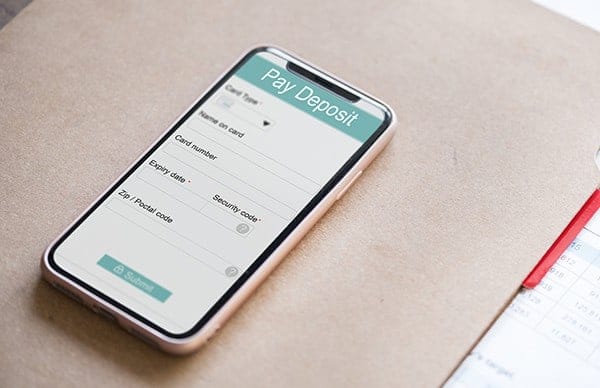
10 freelancing traps you should try and avoid
Posted on 6th September 2019 by Phil Ainley
You’ve taken the plunge to work for yourself and started freelancing. You’re your own boss, you make the decisions, you’re unstoppable.
Woooaaah, hold on there tiger! Take some time to read our article, because there are a load of freelancing traps out there that can stop you in your tracks if you’re not careful.
We all make mistakes, and you can potentially make mistakes that are more damaging as a freelancer than they would be if you were an employee. Mistakes that can not only affect your clients but can also have a heavy impact on you and your business.
There is a learning curve associated with working for yourself and it’s usually quite steep to begin with. We’ve chosen 10 of the best freelancing traps (or worst depending on how you look at them) that we feel you should be aware of.

1. Working for too few clients
This is a common freelancing error and is a trap that is easy to fall into. You’ve got off to a good start and you’re picking up work from a handful of clients already, but it is all too easy to become complacent and think you’re set.
As an employee you will take home a consistent amount of pay every month, no matter what work you complete that month.
As a freelancer your level of income will fluctuate depending on how much work you can complete and invoice each month, and that depends on a regular influx of work and your capacity to complete and deliver the work on time.
Therefore, it is vital that you continually strive to grow your client-base so you can increase and maintain the flow of incoming enquiries.
If you don’t increase your client-base, and then you lose some of your existing clients, you could find yourself with a serious financial crisis.
Key things you can do to increase your client numbers include:
- a) Do some cold prospecting. This is never easy to do, even for the most seasoned of sales professionals, but it is a necessity if you are to gain more work and grow your client list.
- b) Keep your portfolio of work up to date. That includes your website, your social channels, and in your physical portfolio which you take with you to client meetings.
- c) Network Network Network. Get yourself out to business meetings and events in your locale and present your skills to new audiences. You probably won’t pick up any new work straight away, but after a handful of visits to regular events you will get to know people better and they will do the same, to the point where they will start to trust you to do a) some work for them, or b) some work for someone they know who needs your services.
These are just a few ideas you can use to market yourself and improve your business prospects, which links nicely to our next trap to avoid.
There is a phrase in a lot of sales-driven businesses ‘always be closing’, this has changed slightly in recent years with the influence of content marketing to ‘always be helping’, but the premise remains the same in that when you are networking or prospecting you shouldn’t be afraid to ask for an order for work.
Which leads us nicely onto our second point…

2. Not marketing yourself
‘Build it and they will come!’ is the cry that no one successful said, ever!
Just because you’ve set up your own business doesn’t mean people will start flocking to your door. You have to tell them that you’ve set up your own business and tell them why they should flock to your door and not to the doors of your competitors.
Marketing is vital to all organisations and events, but the common perception of marketing is that it is expensive. This is true of certain marketing platforms (especially if you’re inexperienced at using those platforms), but for most freelancers the best marketing they can undertake is to their locale rather than to a national audience.
Local marketing can be relatively inexpensive and can yield good returns if you do it constantly and with a consistent message that your target audience can relate to. By delivering marketing that is both informative and helpful to your target audience you can be viewed as an authority in your profession, which can result in increased enquiries and referrals.
Social media marketing is a great way to promote your products and services as a freelancer. To start with the basic platforms are free, but it can take time to build up a loyal customer-base from it, so don’t expect overnight success.
The paid advertising options are a good way to fast-track your success on social media, but remember to plan your campaigns first and maintain your consistent message to your target audience so you don’t waste money by receiving the wrong types of enquiries.
Be careful what you say on social media too, the face of your business is at stake. This article on the BBC website is well worth a read.

3. Not charging enough (including Pro-bono work)
Remember you work to make a living, not to give your services away. There are many stories of freelancers being asked to work for free in return for online exposure… in some cases the ‘free’ in freelancing has become expected by clients. Again, the BBC ran a great article about this problem.
This is an easy trap to fall into and requests such as “Could you possibly help me with a logo” from your friends, or “You know that project you did for us last year, we’d like to make some small changes if that’s okay” from a client, are common.
You will also find that clients will question your invoices if you do not agree on a price for each job beforehand. This is mainly due to their lack of understanding as to how long even the smallest of projects can take to complete.
Data shows that in 2001 there were 3.3 million people working for themselves. In 2017 that figure had risen to 4.8 million (1 in 7 workers) with the growth of the freelance community showing no signs of letting-up.
Research by IPSE (Association of Independent Professionals and Self-Employed) discovered that 43% of freelance workers had given their time away free of charge. That figure rose dramatically to 86% for those in creative industries.
Whatever you do, stick to your guns and make sure you get a formal agreement in place for every project before you start any work and avoid the next freelancer trap on our list.

4. Working without a signed agreement
It’s important to ensure both you and your client know exactly where you both stand from the outset of any project brief.
The project might be lucrative, and it might be time-bound which will add increased pressure on it to be started as soon as possible. But it is important to spend time at the outset to agree the terms of the project and make sure your client signs the agreement.
It is a common mistake for freelancers to work on projects on the back of goodwill handshakes, but this can lead to late payments, disputes over invoices, and in some cases your client might not pay you at all and expect you to have produced the work gratis.
A great way of avoiding these issues can be to ask for a deposit up-front which will effectively tie both you and your client to the project.

5. Not asking for a deposit
If you to get paid for your work, it’s a good idea to get a deposit up front.
Getting a formal written agreement in place, as well as a deposit prior to you doing any work could be the key to the success of your freelance projects.
For a start, every party involved knows exactly where they stand from the outset.
More importantly, it ties both you and your client into the project, because you both now have a vested interest in it. Your client has paid some money, so obviously wants to see some work, and you have taken receipt of some level of payment, so are obliged to produce some work.
Deposits are also vital for your cashflow. It might make your bookkeeping a little less straight-forward but taking a deposit will help to keep the wolf from the door and could cover the cost of any outlay you need to make to produce your client’s work.
If you don’t take a deposit you could find yourself on the end of “Thanks, it looks great, but we don’t need it right now. We just wanted to see what you could do”. In which case you might not receive any payment at all.

6. Saying ‘yes’ to every gig
It can sometimes feel like you have to say ‘yes’ to every client request or new project enquiry. There will also be times when your cashflow will compel you to say yes even if you know you shouldn’t.
You need to be careful of falling into the trap of saying yes to every project as it can be counterproductive.
If you’re not careful you could find yourself tied to the end of a client’s length of elastic which makes you the passenger in your freelancer career rather than the driver of it.
Think about every request and enquiry you receive and ask yourself if you can comfortably fit it into your current workload.
If the answer is ‘no’, then you may need to exercise your right to decline the work or manage your client’s expectations and negotiate beginning the work in a month or two when your workload is lighter.
Freelancing is often a feast or famine existence, but you want to be able to enjoy a work/life balance rather than working every hour god sends and risking burnout.

7. Promising more than you can deliver
This is the mother of all freelancing traps, it is a Venus flytrap the size of the carnivorous plant in The Little Shop of Horrors and is inextricably linked with feeling the need to accept every freelance gig that comes your way.
Whatever you do, do NOT promise more than you know you are able to deliver.
Promising the work first, then worrying about how you are going to deliver it later, leaves you open to huge problems further down the line that can result in a claim being made against you if you don’t deliver what you promised.
Not only do you risk losing clients and creating a bad reputation for yourself, but you also risk your client making a professional indemnity claim against you if you welch on your promise which causes them to lose revenue. That’s where a Freelance Professional Indemnity Insurance policy can help.

8. Losing sight of your costs
This trap is very easy to fall into. When you’re working for yourself you have to wear many job role hats, which includes the accounting hat. Losing sight of your costs relates to our earlier point about not charging enough for your work.
Freelance Graphic Designers for example often base their design quotes based on how many hours a project will take to produce. Therefore, the simple formula of Hourly Fee £ x Number of Hours = £ Quote is commonly applied to quotes for work.
However, if you also manage the printing for your clients, this is where you can encounter banana skins that you least expect because the physical costs of materials and other potential expenses have been missed.
The cost of paper fluctuates, as does ink to a lesser extent, so for a job based on what you paid for printing a client’s stationery in June, might cost a lot more for the same print order a couple of months later.
This is an example at the inexpensive end of the printing scale. If you manage the printing of client brochures for runs of 5,000 prints or more, then you can encounter quite large changes in costs that can leave you out of pocket if you don’t get your costings correct.
This example is easy to mitigate, simply make sure you get print quotes for every project prior to submitting a quote to your client.
Other costs that are rarely factored into quotes include travel expenses and the time you spend travelling to client meetings and your time spent in those meetings.

9. Not treating all clients equally
This point depends on you and the strength of your client relationships. It is natural to favour clients who are the quickest payers, or those who provide you with the most work, or those you have known the longest, but it is important to keep an eye on the bigger picture, which is growing your business and a loyal client-base.
Some online blogs advocate not treating all customers equally, saying that it isn’t profitable, but they tend to be for certain sectors such as the motor trade which enjoys national and international custom and extensive marketing support.
Of course, there will be times when you have to shoe-horn a new project into your workload, especially if your cashflow needs a boost.
Yet as a freelancer who is building up a business relying on a small number of clients from your locale, then you cannot afford to show too much favouritism towards a couple of clients over all of your other valuable clients… and here’s why:
- a) Put all of your eggs into one basket and you could see all of those eggs broken. In other words, if you prioritise one client over all others and that client then decides to leave you for another service provider you’re stumped, and your cash-flow will suffer as a result.
- b) Winning new business is extremely tough. Therefore, every new client needs to be nurtured and looked after as you would do for any long-standing client. Ignore them and view them as just another new transaction at your peril. You don’t know who they know and what referral business they could provide for you. You never know but they could become your next ‘best’ client.
- c) Prioritising one client over another will show in your work. It may not be obvious to you, but to your clients it will be very clear.
The tendency to rush some projects so you can concentrate on others can be counterproductive and can result in effectively having to do the same job twice as you apply your client’s multitude of amendments. This can also result in you losing control of your costs as you might have to spend more time on a project than you had quoted for.

10. Neglecting planning
‘Fail to plan, plan to fail’ is the saying and it usually rings true, although the levels of failure can be varied.
Freelancing requires a great deal of planning and forming the good habit of constantly referring to plans to ensure you are on track to achieve your goals.
It can be a good idea to work with a business mentor to develop realistic plans that are good for both short-term and long-term success. Planning not only gives you targets to aim for but can also help you mitigate any risks that can be a handbrake on your success.
There are many other traps in the business world, so be careful. Good luck with your freelancing and whatever you do make sure you’re protected in case something goes wrong.
Call us today for freelance insurance for your own peace of mind on 0333 321 1403
Related Articles:
Selling your services as a freelancer
10 Soft skills for every freelancer
Useful Links

Professional Indemnity Insurance
Protects against claims of alleged negligence in your professional services, advice and designs.

Public Liability Insurance
Protects against claims of injury to third-parties or damage to a third-party's property.

Directors and Officers Insurance
Protects your assets in the event of a claim. You may be held personally responsible for your business action and will have unlimited personal liability.
